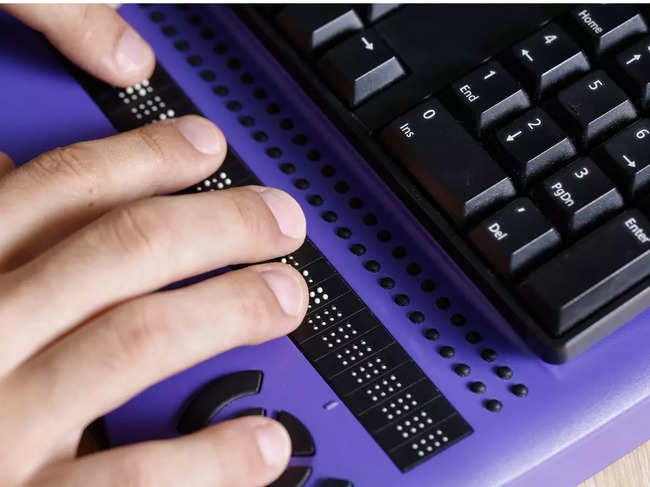 iStock
iStockVision impairment affects people of all ages. Globally, at least a billion people have near or distance vision impairment that could have been prevented or has not yet been addressed. According to a report by the National Programme for Control of Blindness (NPCB), around 12 million people in India are visually impaired. Of the total, only 29.6% are a part of the education system. In India, just 6.86% schools have access to Braille books and audio content, says the report, highlighting the significant gulf between those who need support and those who have access to it.
One silver lining is that technology, which is now pervasive in our day-to-day existence, is affecting changes in the lives of millions of visually impaired people. There is an emphasis on learning and acquiring skills for professional growth now more than ever. Accessible technology tools and devices are bringing visually impaired people to the mainstream and are ensuring that Braille becomes a part of everyday communication.
Braille is a unique system of raised dots that was invented by Louis Braille in 1824. These raised dots can be touched by blind people to read. Over the years, Braille has moved on from being used for just books and documents. It is now prevalent as labels on objects, receipts or bills, pharmaceutical packaging, tactile graphics ,and much more. New-age technology changes are enabling such individuals to enjoy intellectual liberties, security and harness equal opportunities in academics and at work.
 iStock
iStockAssistive Technology: The Big Leap
One person leading the way here is Jitender Agarwal, a 30-year-old dentist who was diagnosed with muscular degeneration of the retina leading to vision loss in 2004. Agarwal started the Sarthak Educational Trust in 2008 to enable persons with disability and bring them to the mainstream.
“I have been using Job Access With Speech (JAWS) software, which is a screen reader for Microsoft Windows. JAWS has a variety of features, including Braille support, multilingual speech synthesis, and multi-screen support. We recently launched the Rojgar Sarathi portal for providing employment to persons with disabilities. The app and the portal both are disabled friendly. The portal enables people with visual impairments to access the website using assistive technologies, such as screen readers,” says Agarwal.
In recent years, technological advancements and innovations have brought a sea of change for the visually impaired. Numerous tech companies and individuals in India are yoking technology and unique ideas to make life effortless for all.
 iStock
iStock"Screen Reading software and special talking and Braille devices allow those with no vision to use computers, cell phones or smartphones and other electronic devices independently. There are specially designed technology-driven HR platforms for helping specially-abled people to improve their operational efficiencies within the workplace. Self-service features, use of WCAG (web content accessibility guidelines) documents and add-ons give more power to people with disabilities so that they can get their tasks done without any complications or issues. All these help visually impaired employees to engage more effectively in their career growth and daily life activities. Therefore, we can definitely state that modern assistive technologies have the potential to transform the life of a visually impaired person from an isolated and dependent human being to a confident and self-sufficient working professional."
Low-Cost Tech For Braille
Several organisations have also been working on bridging the knowledge and experiential gaps visually impaired people face.
 iStock
iStock“We have been designing and developing low tech and cost-effective Braille and tactile content with large fonts for persons with visual impairment, with an approach of making them universally accessible for a wider group of people. In the last two years, there has been an immense dependency on technology and we have, therefore, been working on digital accessibility for various organisations to ensure that their websites and applications are designed to be compatible with tools like screen readers. One of the most exciting things that we have noticed is the number of websites that have provided read-aloud facilities to make them more inclusive and accessible to the visually impaired community,” adds Shah.
With the rapid pace of innovation and developments of new use cases for existing equipment and services, the world is getting closer to becoming a more equal and fair place for all.













 Get Unlimited Access to The Economic Times
Get Unlimited Access to The Economic Times
